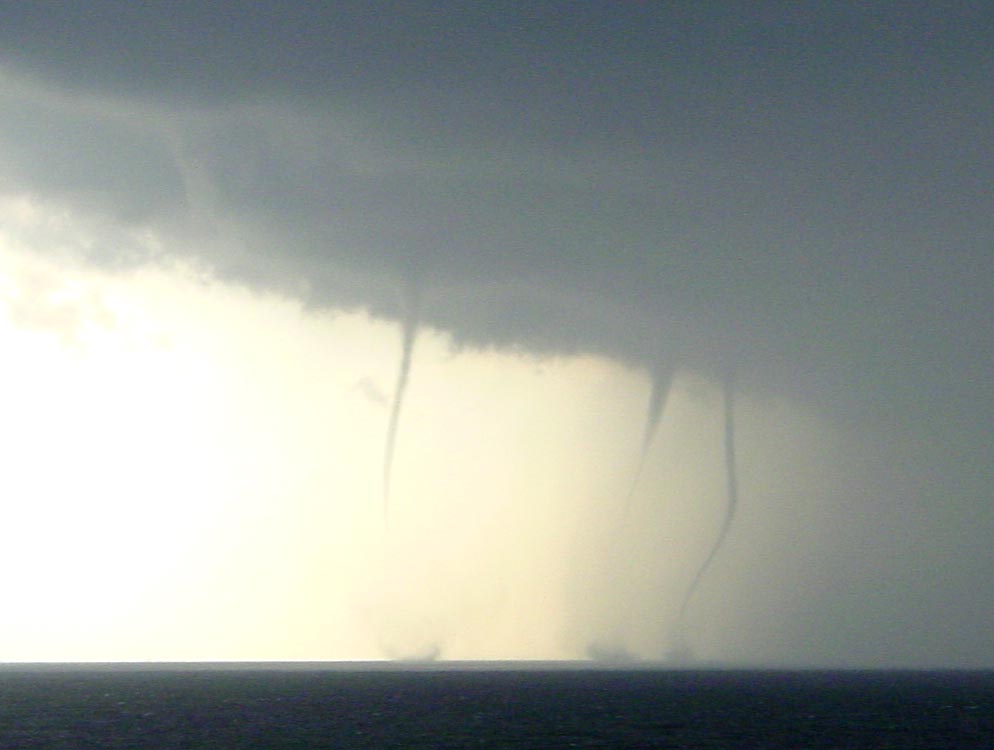A waterspout is an intense columnar vortex (usually appearing as a funnel-shaped cloud) that occurs over a body of water and is connected to a cumuliform cloud. In the common form, it is a non-supercell tornado over water. While it is often weaker than most of its land counterparts, stronger versions spawned by mesocyclones do occur. Waterspouts do not suck up water; the water seen in the main funnel cloud is actually water droplets formed by condensation. While many waterspouts form in the tropics, locations at higher latitude within temperate zones also report waterspouts, such as Europe and the Great Lakes. Although rare, waterspouts have been observed in connection with lake-effect snow precipitation bands.
Waterspouts have a five-part life cycle: formation of a dark spot on the water surface, spiral pattern on the water surface, formation of a spray ring, development of the visible condensation funnel, and ultimately decay.
Waterspouts exist on a microscale, where their environment is less than two kilometers in width. The cloud from which they develop can be as innocuous as a moderate cumulus, or as great as a supercell. While some waterspouts are strong and tornadic in nature, most are much weaker and caused by different atmospheric dynamics. They normally develop in moisture-laden environments as their parent clouds are in the process of development, and it is theorized that they spin up as they move up the surface boundary from the horizontal shear near the surface, and then stretch upwards to the cloud once the low level shear vortex aligns with a developing cumulus cloud or thunderstorm. Weak tornadoes, known as landspouts, have been shown to develop in a similar manner. Wikipedia

